From https://www.fastcompany.com/90716670/this-16-acre-atlanta-park-was-built-to-flood
Set in a low-lying area that’s home to a primarily Black community, the park can absorb 10 million gallons of stormwater.
BY NATE BERG 3 MINUTE READ
In the Vine City neighborhood outside of downtown Atlanta, a few city blocks faced a persistent threat. Filled with the modest homes of the neighborhood’s primarily Black community, this area was the low point in a 150-acre drainage shed. During storms, when water from the entire neighborhood rushed down into the combined sewer and stormwater system, the area would regularly flood. It got so bad that by the early 2000s, the city decided to buy up the most vulnerable 60 homes and tear them down.
With an average annual rainfall of about 50 inches, the problem was not necessarily solved. So the city of Atlanta and the Trust for Public Land teamed up to find a new use for the space. They hired global design, planning, and landscape architecture firm HDR to design a park for the land—the kind of open space that wouldn’t upend people’s lives if it got a little too wet.
But the city didn’t just want to replace low-lying flooded homes with a low-lying flooded park. They worked with HDR on a design that would turn the empty acreage into a thriving public space that could also serve as an engineered drain, safely taking in the water during heavy storms and gradually releasing it underground. The park is designed to flood—and protect the surrounding neighborhood.
“It was embracing that there is a problem but turning it into an amenity,” says David West, a senior landscape architect from HDR’s Atlanta office.
That amenity is Rodney Cook Sr. Park, a $40 million, 16-acre green space featuring wide lawns, play and exercise equipment, sports courts, walking paths, and a very big pond that can soak up the waters that come during frequent storms. For a neighborhood that was once home to Martin Luther King Jr. and other celebrated civil rights figures, the park is seen as a new central gathering space.
“Instead of being vacant land, which it was for more than 10 years after the homes were removed, we wanted to create a place that brought the community back together,” says Robby Bryant, HDR’s principal landscape architect.
The park’s main features are a 2-acre pond and a series of fountains that line one side of the property. A swooping pedestrian bridge arcs over the water, and a wetland-like meadow rings the pond’s edge. The 3-acre meadow is part of the park’s floodable space; when wet weather moves in and the underlying storm drains are overwhelmed, the pond will overflow into the meadow. During especially big rain events—the so-called 100-year storms that seem to be happening much more often—the overflow will spread out across the roughly 2-acre great lawn nearby. In total, the park is able to capture and store up to 10 million gallons of stormwater.
Cook Park opened last summer, and it represents something of a return to the area’s roots. Before the floods began plaguing residents in Vine City, the site was home to another park, designed by eminent landscape architects the Olmsted Brothers. The designers from HDR sought to honor that legacy by replicating some of the original design elements, including the wide, arching walkways around the pond and lawn. “We wanted to bring back the romantic notion of being able to walk right along the water’s edge,” West says.
The park flooded several times during and after construction, and the drainage worked as expected, a positive sign for this new heart of the community. “It will be a huge asset for the neighborhood,” West says, “and also help guide future development in the area.”
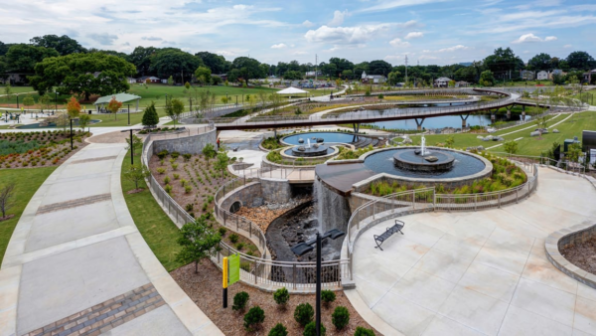

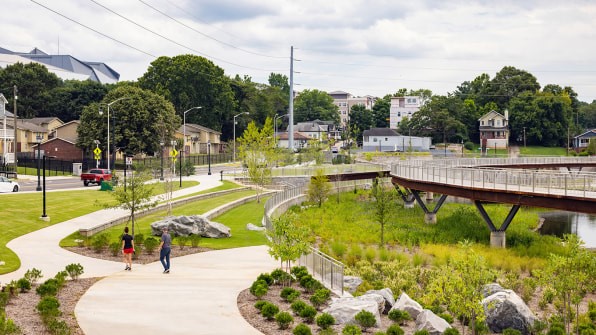
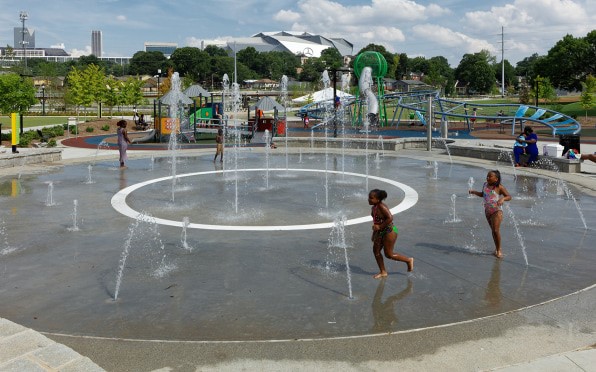
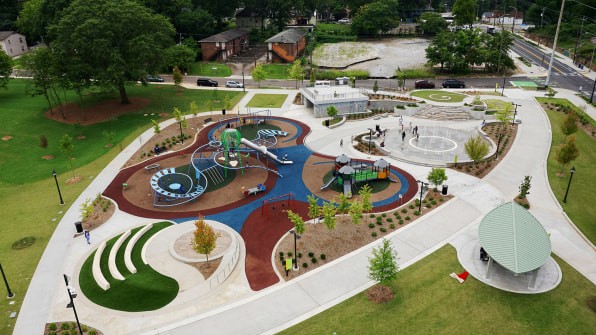

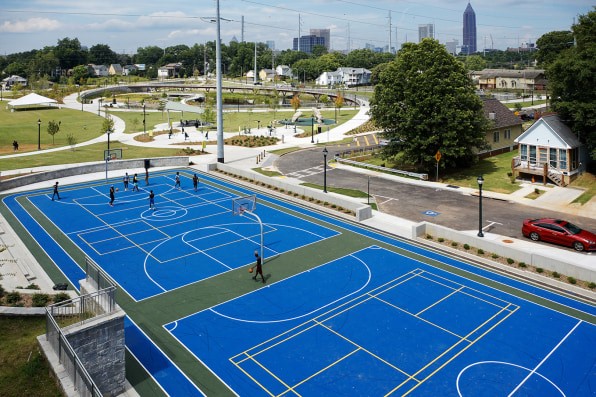

No Comment